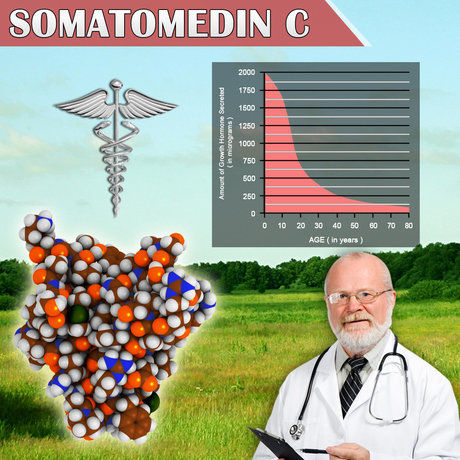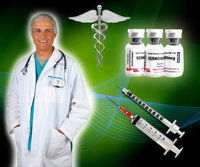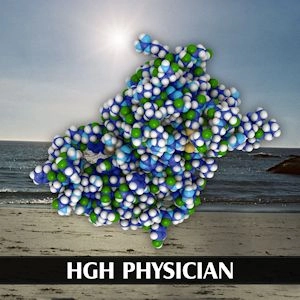Introduction
The advent of phosphodiesterase type 5 (PDE5) inhibitors, such as sildenafil citrate (commonly known by its brand name Viagra), has revolutionized the treatment of erectile dysfunction (ED) in American males. While the efficacy and safety profile of Viagra have been extensively documented, emerging research has shed light on its potential effects on vision. This article delves into the ophthalmological implications of Viagra use among American men, providing a comprehensive overview of the current understanding and implications for clinical practice.
Mechanism of Action and Vision-Related Concerns
Viagra functions by selectively inhibiting the PDE5 enzyme, which in turn increases cyclic guanosine monophosphate (cGMP) levels, facilitating smooth muscle relaxation in the penile tissue. However, PDE5 is not exclusive to the penile vasculature; it is also present in the retina, specifically in the photoreceptor cells. This shared presence raises concerns about potential visual side effects.
Reported Visual Side Effects
Numerous clinical studies and post-marketing surveillance have identified various visual disturbances associated with Viagra use. The most commonly reported side effects include transient changes in color perception, particularly a bluish tinge to vision (cyanopsia), and heightened sensitivity to light (photophobia). These effects are typically mild and resolve within hours of ingestion.
Rare but Serious Visual Complications
While the aforementioned side effects are generally benign, there have been rare reports of more severe ophthalmological complications linked to Viagra use. Non-arteritic anterior ischemic optic neuropathy (NAION), a condition characterized by sudden vision loss due to optic nerve damage, has been observed in a small number of Viagra users. Although the exact mechanism remains unclear, the potential for vascular compromise in the optic nerve head is a suspected contributing factor.
Epidemiological Data and Risk Factors
Epidemiological studies have attempted to quantify the risk of vision-related issues among American males using Viagra. A comprehensive analysis of data from the National Institutes of Health (NIH) suggests that the incidence of serious visual complications is exceedingly low, with less than 1 in 10,000 users affected. However, certain risk factors, such as pre-existing cardiovascular disease, diabetes, and a history of NAION, may increase an individual's susceptibility.
Clinical Implications and Recommendations
Given the potential for vision-related side effects, healthcare providers should engage in thorough patient education and risk assessment prior to prescribing Viagra. Patients should be informed about the possibility of transient visual disturbances and instructed to seek immediate medical attention if they experience sudden vision loss or persistent visual changes. Regular ophthalmological evaluations may be warranted for individuals with pre-existing eye conditions or those at higher risk for NAION.
Ongoing Research and Future Directions
The field of ophthalmology continues to explore the relationship between PDE5 inhibitors and vision. Ongoing research aims to elucidate the underlying mechanisms of visual side effects and identify potential preventive measures. Novel formulations of Viagra and alternative PDE5 inhibitors are being investigated to minimize ophthalmological risks while maintaining therapeutic efficacy.
Conclusion
While Viagra has proven to be a groundbreaking treatment for erectile dysfunction in American males, its potential impact on vision necessitates careful consideration. The majority of visual side effects are mild and transient, but rare cases of serious complications underscore the importance of patient education and vigilant monitoring. As research progresses, a deeper understanding of the ophthalmological effects of Viagra will inform clinical practice and enhance patient safety. Healthcare providers must remain attuned to the latest developments in this field to optimize the management of ED while safeguarding the visual health of their patients.
Contact Us For A Fast And Professional Response

- Revolutionizing ED Treatment: Exploring Innovations Beyond Traditional Therapies [Last Updated On: February 19th, 2025] [Originally Added On: February 19th, 2025]
- Exploring the Impact of Diet on Viagra Efficacy: Foods to Embrace and Avoid [Last Updated On: February 24th, 2025] [Originally Added On: February 24th, 2025]
- Invigorating the Sphere of Sexual Health: The Epoch-Making Journey of Viagra [Last Updated On: February 25th, 2025] [Originally Added On: February 25th, 2025]
- Deciphering Sildenafil: Revealing the Scientific Mastery Behind Viagra's Triumph [Last Updated On: February 26th, 2025] [Originally Added On: February 26th, 2025]
- Decoding the Contrast: Viagra versus Generic Sildenafil [Last Updated On: February 27th, 2025] [Originally Added On: February 27th, 2025]
- Unveiling the Power of the Blue Pill: An In-Depth Insight into Viagra's Mechanism [Last Updated On: February 28th, 2025] [Originally Added On: February 28th, 2025]
- The Progressive Journey of Erectile Dysfunction Treatments: The Shift from Viagra to Contemporary Approaches [Last Updated On: February 28th, 2025] [Originally Added On: February 28th, 2025]
- Unveiling the Intricacies: An Examination of the Chemistry of Sildenafil [Last Updated On: March 1st, 2025] [Originally Added On: March 1st, 2025]
- Unveiling the Cardiac Impact: Understanding the Aspects of Viagra [Last Updated On: March 2nd, 2025] [Originally Added On: March 2nd, 2025]
- Optimizing Sildenafil Dosage for Erectile Dysfunction and Pulmonary Arterial Hypertension: Guidelines and Personalized Approaches [Last Updated On: March 3rd, 2025] [Originally Added On: March 3rd, 2025]
- Comprehensive Guide to Viagra: Uses, Side Effects, and Safety Tips [Last Updated On: March 4th, 2025] [Originally Added On: March 4th, 2025]
- Comparing Viagra, Cialis, and Levitra: ED Treatment Options for American Men [Last Updated On: March 4th, 2025] [Originally Added On: March 4th, 2025]
- Understanding and Managing Common Side Effects of Viagra for Erectile Dysfunction [Last Updated On: March 5th, 2025] [Originally Added On: March 5th, 2025]
- Understanding Viagra: Uses, Blood Pressure Effects, and Risks for Hypertensive Men [Last Updated On: March 6th, 2025] [Originally Added On: March 6th, 2025]
- The Impact of Age on Viagra's Efficacy: Insights for American Males Seeking Treatment [Last Updated On: March 7th, 2025] [Originally Added On: March 7th, 2025]
- Managing Erectile Dysfunction in Diabetic Men: Efficacy and Safety of Viagra Treatment [Last Updated On: March 8th, 2025] [Originally Added On: March 8th, 2025]
- The Psychological Impact of Viagra: Enhancing Self-Esteem and Mental Health in Men [Last Updated On: March 9th, 2025] [Originally Added On: March 9th, 2025]
- Revolutionizing Intimacy: The Impact of Viagra on Male Sexual Health Culture [Last Updated On: March 12th, 2025] [Originally Added On: March 12th, 2025]
- Unveiling the Impact of Viagra: Transformative Stories from American Men [Last Updated On: March 13th, 2025] [Originally Added On: March 13th, 2025]
- Unveiling the Impact of Lifestyle on Viagra's Effectiveness in American Men [Last Updated On: March 15th, 2025] [Originally Added On: March 15th, 2025]
- Viagra's Impact on Libido: Understanding the Indirect Effects and Holistic Sexual Health [Last Updated On: March 16th, 2025] [Originally Added On: March 16th, 2025]
- Viagra Market Dynamics: Trends, Demographics, and Future in the U.S. [Last Updated On: March 17th, 2025] [Originally Added On: March 17th, 2025]
- Viagra and Alcohol: Risks, Interactions, and Safe Consumption Guidelines for American Men [Last Updated On: March 18th, 2025] [Originally Added On: March 18th, 2025]
- Sildenafil: From Viagra to Cultural Icon in Treating American Males' ED [Last Updated On: March 19th, 2025] [Originally Added On: March 19th, 2025]
- Media Myths and Realities of Viagra: Insights for American Males [Last Updated On: March 19th, 2025] [Originally Added On: March 19th, 2025]
- Generic Sildenafil: Benefits, Challenges, and Navigating ED Treatment Options [Last Updated On: March 20th, 2025] [Originally Added On: March 20th, 2025]
- Understanding the Placebo Effect in ED Treatment with Viagra for American Males [Last Updated On: March 20th, 2025] [Originally Added On: March 20th, 2025]
- Viagra Pricing: Global Variations and Cost-Saving Strategies for American Males [Last Updated On: March 21st, 2025] [Originally Added On: March 21st, 2025]
- Counterfeit Viagra Risks: Identifying Genuine Pills and Safe Purchasing Practices for American Males [Last Updated On: March 21st, 2025] [Originally Added On: March 21st, 2025]
- Sildenafil's Off-Label Uses: Benefits for American Males Beyond ED Treatment [Last Updated On: March 21st, 2025] [Originally Added On: March 21st, 2025]
- Viagra: Uses, Mechanism, and Critical Drug Interactions for Safe ED Management [Last Updated On: March 21st, 2025] [Originally Added On: March 21st, 2025]
- Viagra's Role in Managing Pulmonary Hypertension for American Males: A Comprehensive Guide [Last Updated On: March 21st, 2025] [Originally Added On: March 21st, 2025]
- Viagra's Impact on Prostate Health: BPH, Cancer, and Risks Explored [Last Updated On: March 21st, 2025] [Originally Added On: March 21st, 2025]
- Viagra Usage Guide: Dos and Don'ts for Effective ED Treatment [Last Updated On: March 21st, 2025] [Originally Added On: March 21st, 2025]
- Navigating Viagra Discussions with Doctors: A Guide for American Men [Last Updated On: March 22nd, 2025] [Originally Added On: March 22nd, 2025]
- Comparing Sildenafil and Viagra: Efficacy, Side Effects, and Cost for American Men [Last Updated On: March 22nd, 2025] [Originally Added On: March 22nd, 2025]
- Viagra's Impact: Transforming ED Perceptions and Masculinity in American Society [Last Updated On: March 22nd, 2025] [Originally Added On: March 22nd, 2025]
- Viagra: Enhancing Sexual Performance in American Males - Mechanisms and Impact [Last Updated On: March 23rd, 2025] [Originally Added On: March 23rd, 2025]
- Viagra's Recreational Use: Risks, Rewards, and Responsibilities for American Males [Last Updated On: March 23rd, 2025] [Originally Added On: March 23rd, 2025]
- Sildenafil: Beyond ED - Treating PAH, Raynaud's, Altitude Sickness, and Heart Failure [Last Updated On: March 23rd, 2025] [Originally Added On: March 23rd, 2025]
- Sildenafil's Impact on Urology: Revolutionizing ED Treatment for American Males [Last Updated On: March 24th, 2025] [Originally Added On: March 24th, 2025]
- Viagra's Impact on Mental Health: Enhancing Well-being in American Males with ED [Last Updated On: March 24th, 2025] [Originally Added On: March 24th, 2025]
- Stress and ED in American Men: Understanding Links and Managing with Viagra [Last Updated On: March 24th, 2025] [Originally Added On: March 24th, 2025]
- Viagra's Impact on American Couples: Enhancing Confidence and Relationship Dynamics [Last Updated On: March 25th, 2025] [Originally Added On: March 25th, 2025]
- Viagra: Enhancing Sexual Confidence and Treating Erectile Dysfunction Effectively [Last Updated On: March 25th, 2025] [Originally Added On: March 25th, 2025]
- Viagra's Role in Enhancing Life Quality for Men with Erectile Dysfunction [Last Updated On: March 25th, 2025] [Originally Added On: March 25th, 2025]
- Sildenafil: Understanding Mechanism, Uses, Side Effects, and Safe Usage for ED Treatment [Last Updated On: March 25th, 2025] [Originally Added On: March 25th, 2025]
- Sildenafil Contraindications: Essential Safety Guide for American Men [Last Updated On: March 25th, 2025] [Originally Added On: March 25th, 2025]
- Viagra's Role in Sexual Rehabilitation Post-Surgery for American Males: Efficacy and Considerations [Last Updated On: March 25th, 2025] [Originally Added On: March 25th, 2025]
- Erectile Dysfunction in American Men: Causes, Viagra Treatment, and Lifestyle Solutions [Last Updated On: March 26th, 2025] [Originally Added On: March 26th, 2025]
- Viagra's Economic Impact: Revolutionizing Pharma Industry Revenue and R&D [Last Updated On: March 26th, 2025] [Originally Added On: March 26th, 2025]
- Viagra's Legal Landscape: Regulations, Prescriptions, and Accessibility for American Males [Last Updated On: March 26th, 2025] [Originally Added On: March 26th, 2025]
- Viagra's Journey from Medical Breakthrough to Cultural Icon in American Media [Last Updated On: March 26th, 2025] [Originally Added On: March 26th, 2025]
- Viagra's Impact on Hormonal Levels: Insights from Recent American Male Studies [Last Updated On: March 26th, 2025] [Originally Added On: March 26th, 2025]
- Cultural Dynamics and Viagra Use Among American Males: Masculinity, Stigma, and Health [Last Updated On: March 26th, 2025] [Originally Added On: March 26th, 2025]
- Maximizing Viagra Benefits: Usage, Timing, and Holistic Sexual Health Strategies [Last Updated On: March 27th, 2025] [Originally Added On: March 27th, 2025]
- Viagra's Impact on Exercise Performance in American Males: Benefits and Considerations [Last Updated On: March 27th, 2025] [Originally Added On: March 27th, 2025]
- Protecting Privacy While Using Viagra: A Comprehensive Guide for American Men [Last Updated On: March 27th, 2025] [Originally Added On: March 27th, 2025]
- Understanding Sexual Arousal and Viagra's Role in Treating ED for American Men [Last Updated On: March 27th, 2025] [Originally Added On: March 27th, 2025]
- Viagra vs. Natural Remedies for ED: Efficacy, Safety, and Cost for American Men [Last Updated On: March 27th, 2025] [Originally Added On: March 27th, 2025]
- Testosterone's Crucial Role in Enhancing Viagra's Efficacy for American Males [Last Updated On: March 27th, 2025] [Originally Added On: March 27th, 2025]
- Smoking Impairs Viagra's Efficacy: Insights for American Males Managing ED [Last Updated On: March 27th, 2025] [Originally Added On: March 27th, 2025]
- Viagra: Enhancing Blood Flow for Improved Erectile Function in American Males [Last Updated On: March 28th, 2025] [Originally Added On: March 28th, 2025]
- Viagra's Impact on Sexual Medicine and American Men's Health [Last Updated On: March 28th, 2025] [Originally Added On: March 28th, 2025]
- Viagra: From ED Treatment to Recreational Use Among American Males [Last Updated On: March 28th, 2025] [Originally Added On: March 28th, 2025]
- Viagra: Uses, Dosage, Side Effects, and Lifestyle Integration for ED Management [Last Updated On: March 29th, 2025] [Originally Added On: March 29th, 2025]
- Generic Sildenafil: Revolutionizing ED Treatment Accessibility and Affordability in America [Last Updated On: March 29th, 2025] [Originally Added On: March 29th, 2025]
- Viagra's Impact on Male Fertility: Myths, Facts, and Research Insights [Last Updated On: March 29th, 2025] [Originally Added On: March 29th, 2025]
- FDA Approval Journey of Viagra: From Discovery to Market Impact [Last Updated On: March 29th, 2025] [Originally Added On: March 29th, 2025]
- Ethical Dilemmas in Viagra Advertising: Impact on Consumers and Regulatory Challenges [Last Updated On: March 30th, 2025] [Originally Added On: March 30th, 2025]
- Telemedicine Revolutionizes Viagra Access for American Men's Health [Last Updated On: March 30th, 2025] [Originally Added On: March 30th, 2025]
- Sildenafil: Restoring Sexual Health and Confidence in American Males Post-Injury [Last Updated On: April 1st, 2025] [Originally Added On: April 1st, 2025]
- Viagra: Long-Term Benefits, Risks, and Psychological Impacts for American Men [Last Updated On: April 2nd, 2025] [Originally Added On: April 2nd, 2025]
- Viagra's Impact on Sexual Satisfaction and Relationships in American Men: Clinical Insights [Last Updated On: April 2nd, 2025] [Originally Added On: April 2nd, 2025]
- Viagra Use in Men with Chronic Illnesses: Risks, Interactions, and Safety Considerations [Last Updated On: April 4th, 2025] [Originally Added On: April 4th, 2025]
- Sildenafil Pharmacokinetics: Absorption, Distribution, Metabolism, Elimination in American Males [Last Updated On: April 5th, 2025] [Originally Added On: April 5th, 2025]
- Viagra Interactions: Key Drug Combinations to Avoid for Safe ED Treatment [Last Updated On: April 5th, 2025] [Originally Added On: April 5th, 2025]
- Viagra's Role in Treating Erectile Dysfunction Among Young American Men [Last Updated On: April 8th, 2025] [Originally Added On: April 8th, 2025]
- Viagra vs. Other ED Treatments: Efficacy, Side Effects, and Patient Satisfaction in American Men [Last Updated On: April 9th, 2025] [Originally Added On: April 9th, 2025]
- Managing ED: Sildenafil vs. Lifestyle Changes and Combined Approaches [Last Updated On: April 9th, 2025] [Originally Added On: April 9th, 2025]
















